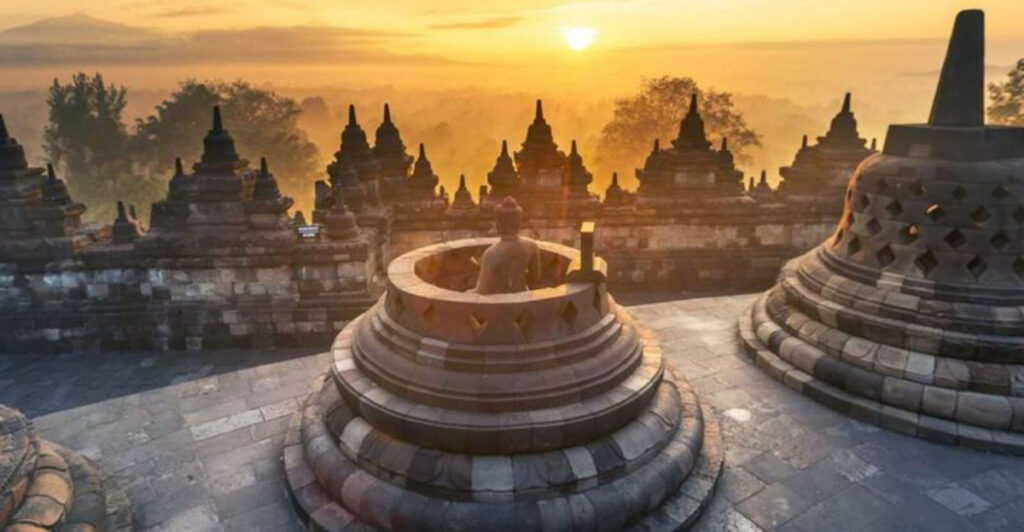Temples have long been sanctuaries for worshippers and travelers alike, offering solace, beauty, and a glimpse into spiritual traditions. Across the globe, these monumental structures stand as testaments to human creativity and devotion. From towering pagodas to serene Zen gardens, each temple tells a unique story of faith and culture. In this collection, we explore 20 of the world’s most breathtaking temples, each offering a distinct experience of tranquility and architectural marvel. Whether nestled in bustling cities or perched atop remote mountains, these temples invite visitors to pause, reflect, and embrace the peace within their sacred walls.
1. Angkor Wat
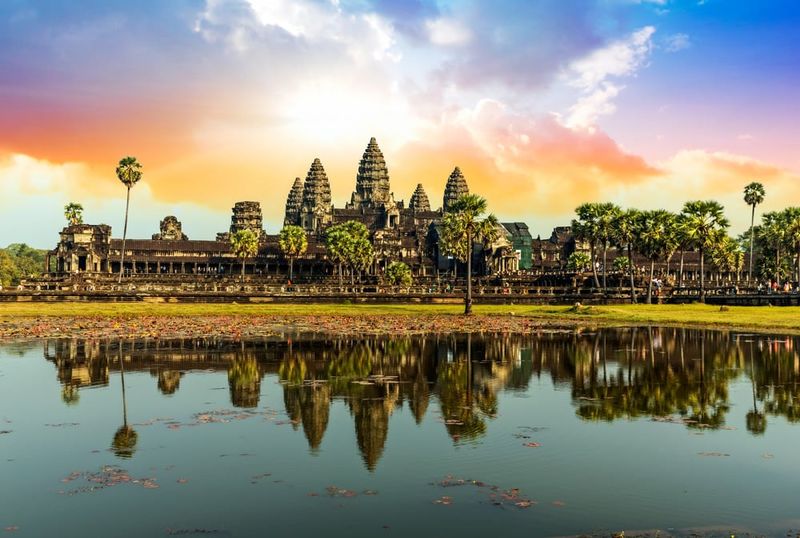
Angkor Wat, a marvel of Khmer architecture, mesmerizes with its grandeur and detail. This UNESCO World Heritage site, located in Cambodia, is the largest religious monument in the world. Its construction began in the early 12th century by King Suryavarman II and symbolizes Mount Meru, the home of the gods.
Visitors can explore its extensive bas-reliefs depicting epic tales and witness the harmonious blend of spirituality and artistry. Angkor Wat’s reflection in the moat during sunrise is an unforgettable sight, capturing hearts with its serene beauty. A visit here feels like stepping into a different era.
2. Shwedagon Pagoda
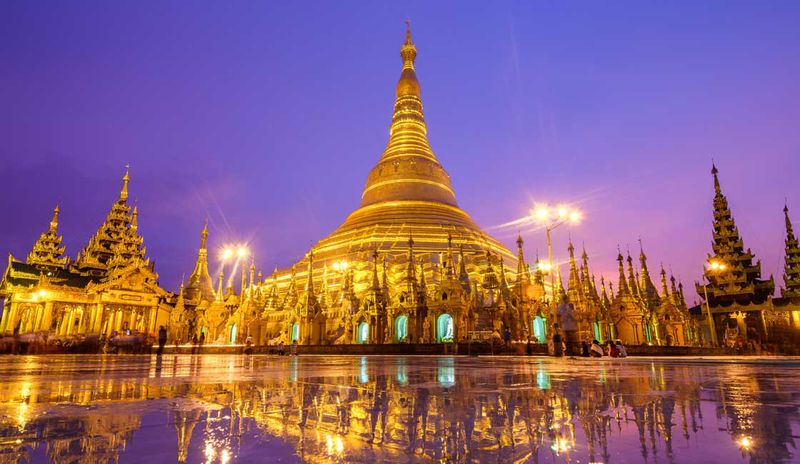
Standing proudly in Yangon, Myanmar, the Shwedagon Pagoda is a golden beacon of faith. Said to house relics of four Buddhas, it attracts pilgrims from around the globe. The pagoda’s brilliant gold-plated stupa, encrusted with diamonds, is a sight to behold.
Legend has it that the pagoda is over 2,500 years old, making it one of the oldest Buddhist shrines. Visitors often participate in rituals or meditate in its serene surroundings. As the sun sets, the pagoda glows with an ethereal light, offering a moment of reflection and peace.
3. Temple of the Tooth
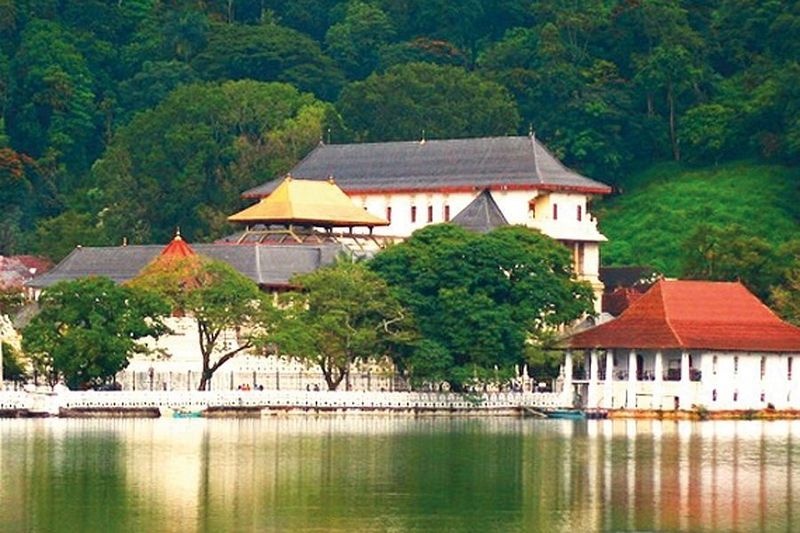
Nestled in the heart of Kandy, Sri Lanka, the Temple of the Tooth holds great significance for Buddhists. It is believed to house the sacred tooth relic of Buddha, making it a revered pilgrimage site. The temple’s stunning architecture showcases traditional Kandyan style, with intricate wood carvings and decorative elements.
Visitors can witness the vibrant rituals and ceremonies that take place daily. The annual Esala Perahera festival is a highlight, featuring grand parades and cultural performances. A visit to the Temple of the Tooth is a spiritual and cultural immersion.
4. Wat Rong Khun
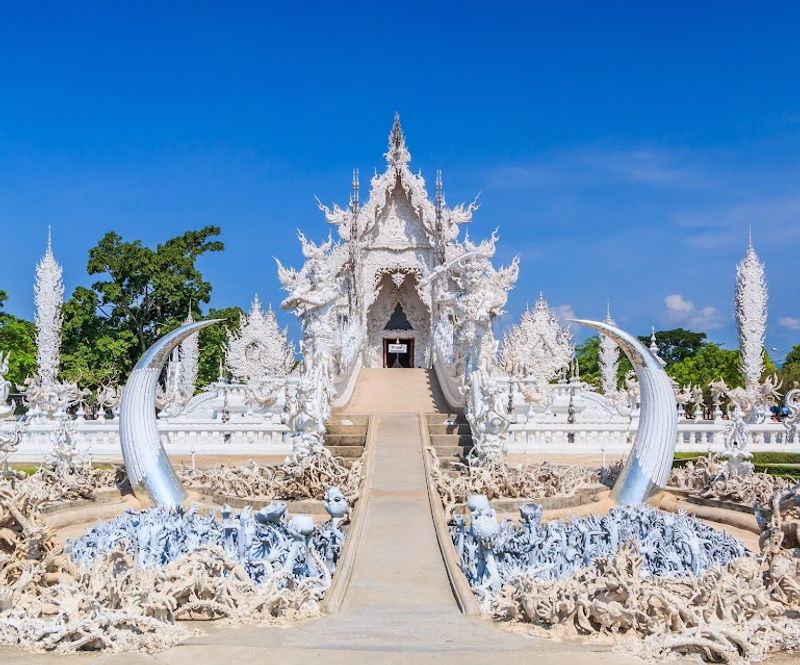
Known as the White Temple, Wat Rong Khun in Chiang Rai, Thailand, stands out with its modern artistry and celestial appearance. Designed by artist Chalermchai Kositpipat, this temple is more than a place of worship; it’s a masterpiece of contemporary art.
The stark white exterior, decorated with mirrors, symbolizes purity and wisdom. Inside, surreal murals blend traditional Buddhist themes with pop culture elements, creating a unique spiritual journey. Visitors are encouraged to reflect on life’s impermanence while exploring its grounds. Wat Rong Khun is an enchanting fusion of art and spirituality.
5. Borobudur
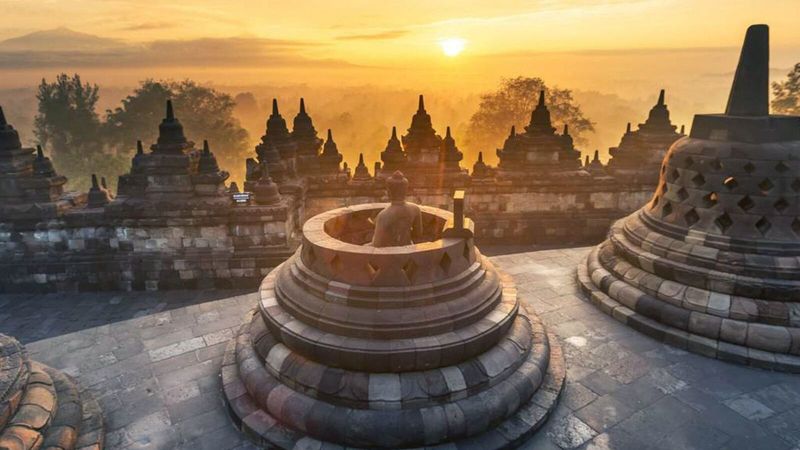
Borobudur, located in Central Java, Indonesia, is the world’s largest Buddhist monument. Built in the 9th century, it is renowned for its intricate relief panels and towering stupas. This UNESCO World Heritage site represents the Buddhist path to enlightenment through its architectural design.
The temple’s nine stacked platforms symbolize the stages of spiritual ascension. Visitors often climb to the top at sunrise to experience breathtaking views of the surrounding landscapes. Borobudur’s serene ambiance and historical significance make it a must-visit destination for those seeking spiritual insight.
6. Harmandir Sahib

The Harmandir Sahib, or Golden Temple, is a spiritual haven for Sikhs worldwide, located in Amritsar, India. Its iconic gilded exterior and serene surroundings draw millions of visitors annually. The temple’s architecture, blending Hindu and Islamic styles, reflects a message of unity and inclusivity.
Central to the temple is the Guru Granth Sahib, the holy scripture of Sikhism, which is revered daily. Visitors are welcomed to participate in langar, a community meal symbolizing equality. The Golden Temple’s tranquil atmosphere and spiritual resonance offer a profound sense of peace and belonging.
7. Jokhang Temple
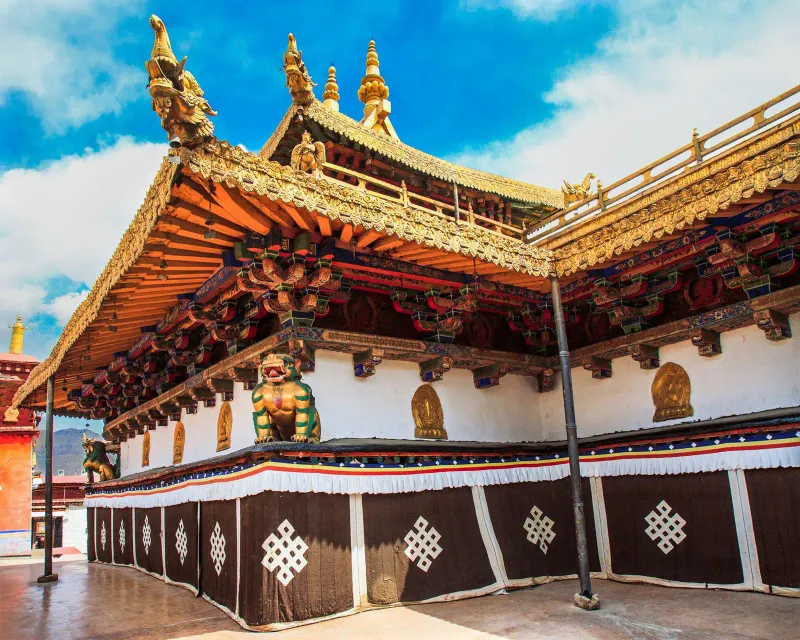
Jokhang Temple, situated in the heart of Lhasa, Tibet, is the spiritual center of Tibetan Buddhism. Founded in the 7th century, it houses numerous sacred relics and is a UNESCO World Heritage site.
The temple’s architecture combines Indian, Tibetan, and Nepalese styles, creating a unique aesthetic. Pilgrims from across Tibet flock to Jokhang, spinning prayer wheels and offering prostrations. The vibrant Barkhor Street encircles the temple, bustling with life and devotion. A visit to Jokhang Temple offers a profound connection to Tibetan culture and spirituality.
8. Paro Taktsang
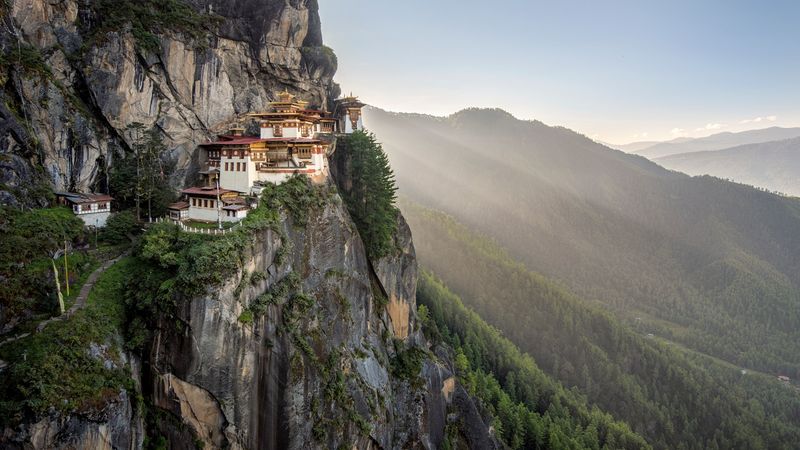
Perched precariously on a cliffside, Paro Taktsang, or the Tiger’s Nest Monastery, is a symbol of Bhutan’s spiritual heritage. Legend states that Guru Rinpoche flew to this location on a tigress’s back, bringing Buddhism to Bhutan in the 8th century.
The monastery’s remote location requires a challenging hike, rewarding visitors with breathtaking views and a serene atmosphere. Inside, richly adorned prayer halls invite contemplation and meditation. Paro Taktsang’s mystical allure and historical significance make it a must-visit for spiritual seekers and adventurers alike.
9. Kinkaku-ji

Kinkaku-ji, or the Golden Pavilion, is a Zen Buddhist temple in Kyoto, Japan, known for its stunning gold-leaf façade. Originally a shogun’s villa, it became a temple in the early 15th century, embodying peace and harmony.
The pavilion’s reflection in the surrounding pond creates a picturesque scene, especially during autumn when the gardens are ablaze with color. Visitors can wander through the meticulously manicured gardens and absorb the tranquil ambiance. Kinkaku-ji’s beauty and serenity offer a peaceful retreat from the bustling city.
10. Sri Ranganathaswamy Temple
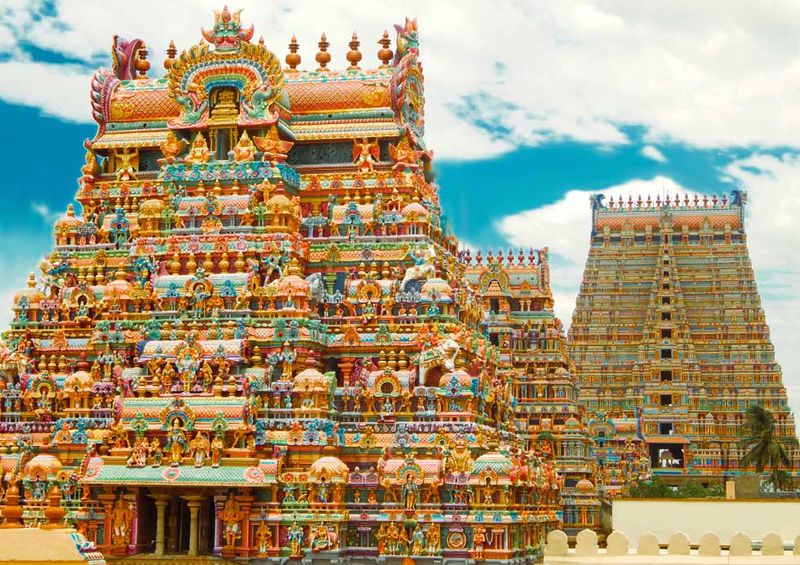
Sri Ranganathaswamy Temple, located in Srirangam, India, is a vast complex dedicated to Lord Vishnu. Known for its towering gopurams (gateway towers), the temple is a masterpiece of Dravidian architecture and one of the largest functioning Hindu temples in the world.
Pilgrims come to seek blessings and partake in the vibrant festivals held throughout the year. The temple’s intricate carvings and serene courtyards invite reflection and devotion. Sri Ranganathaswamy’s rich history and spiritual significance make it a cornerstone of South Indian religious life.
11. Wat Arun
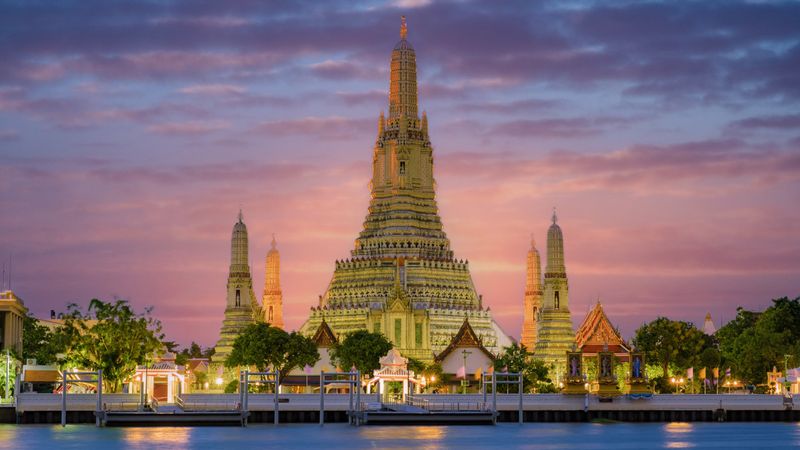
Wat Arun, or the Temple of Dawn, graces the banks of the Chao Phraya River in Bangkok, Thailand. Renowned for its towering spires and intricate porcelain decorations, it is a symbol of beauty and resilience.
The temple’s central prang offers panoramic views of the river and cityscape, especially breathtaking at sunrise and sunset. Visitors can explore the temple’s detailed murals and gardens, reflecting on its historical and cultural significance. Wat Arun’s elegance and charm make it a must-visit landmark for those exploring Bangkok’s spiritual heritage.
12. Mahabodhi Temple
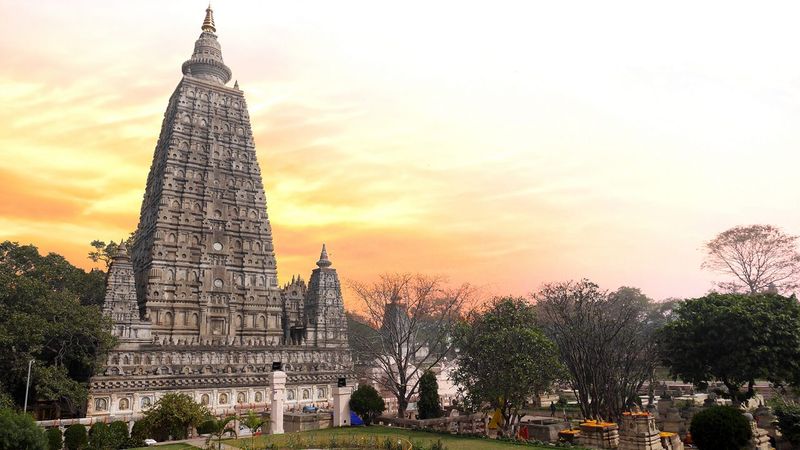
Mahabodhi Temple, in Bodh Gaya, India, marks the site where Siddhartha Gautama attained enlightenment and became the Buddha. This UNESCO World Heritage site is a pilgrimage destination for Buddhists worldwide.
The temple’s towering spire and detailed carvings reflect the artistic brilliance of ancient India. Surrounding the temple is the sacred Bodhi Tree, under which the Buddha meditated. Visitors often engage in meditation and reflection, immersing themselves in the tranquil energy. Mahabodhi Temple’s spiritual significance and serene ambiance offer a profound experience for all who visit.
13. Senso-ji
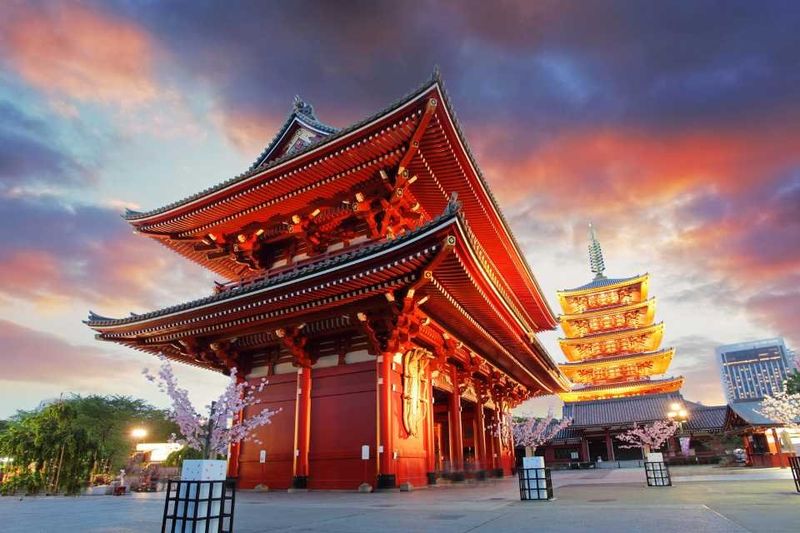
Senso-ji, Tokyo’s oldest temple, is a vibrant hub of spirituality and tradition. Founded in the 7th century, it is dedicated to Kannon, the Goddess of Mercy. The iconic Kaminarimon Gate, with its giant red lantern, welcomes visitors to a bustling street of shops and eateries leading to the temple.
Senso-ji’s main hall and five-story pagoda exude a timeless charm, attracting millions annually. During festivals, the temple grounds are adorned with colorful decorations, creating a lively atmosphere. Senso-ji’s blend of history, culture, and spirituality makes it a must-see in Tokyo.
14. Lotus Temple
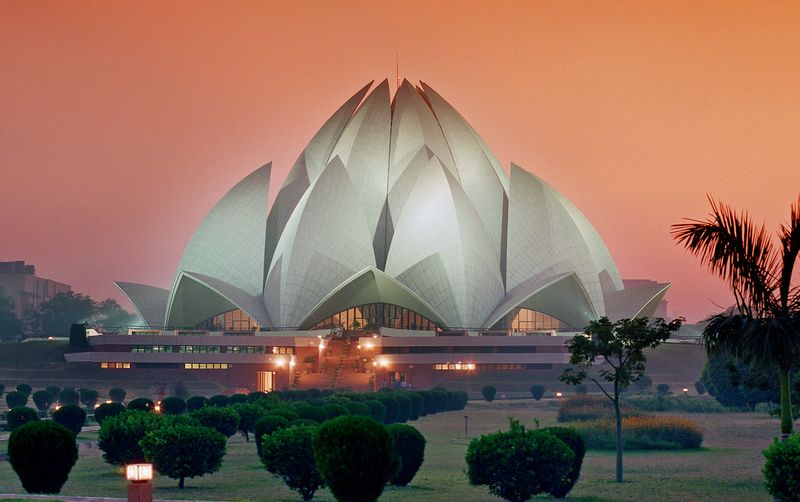
The Lotus Temple in New Delhi, India, stands as an emblem of unity and harmony, embracing all faiths. Its distinctive design, resembling a blooming lotus, symbolizes purity and peace.
Constructed from white marble, the temple’s petals form nine pools of water, creating a tranquil oasis amidst the bustling city. Visitors are invited to meditate in the serene prayer hall, fostering a sense of inner peace and reflection. The Lotus Temple’s architectural beauty and inclusive philosophy attract millions, making it a beacon of spiritual harmony in modern India.
15. Batu Caves
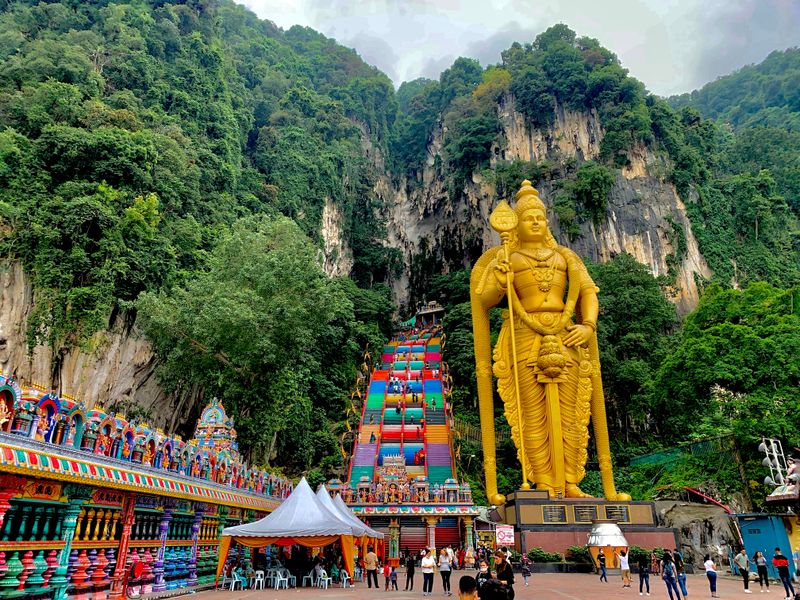
Batu Caves, located just outside Kuala Lumpur, Malaysia, is a renowned Hindu pilgrimage site. The complex consists of limestone caves and temples, with the main cave housing the revered shrine of Lord Murugan.
A striking feature is the towering golden statue of Murugan, guarding the entrance alongside colorful steps leading to the cave. During the Thaipusam festival, devotees gather in large numbers, performing rituals and offering prayers. Batu Caves’ dramatic natural setting and vibrant spirituality make it a captivating destination for visitors and pilgrims alike.
16. Pha That Luang
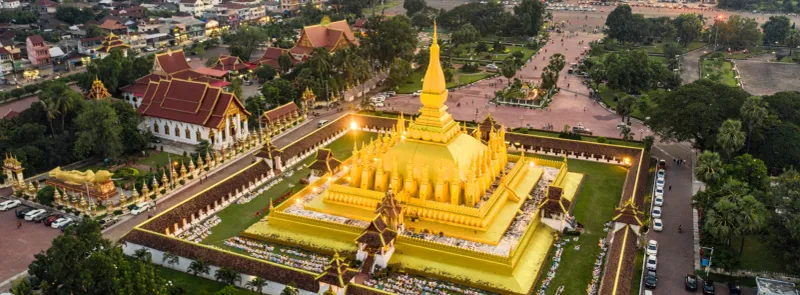
Pha That Luang, the Great Stupa in Vientiane, Laos, is a symbol of national pride and Buddhist devotion. Said to contain a relic of the Buddha, it stands as the most sacred monument in the country.
The stupa’s gleaming gold exterior, surrounded by gardens, represents the Lao people’s faith and resilience. During the annual That Luang Festival, thousands gather to celebrate with music, dance, and offerings. Pha That Luang’s majestic presence and cultural significance make it a cherished landmark for both locals and visitors.
17. Fushimi Inari-taisha
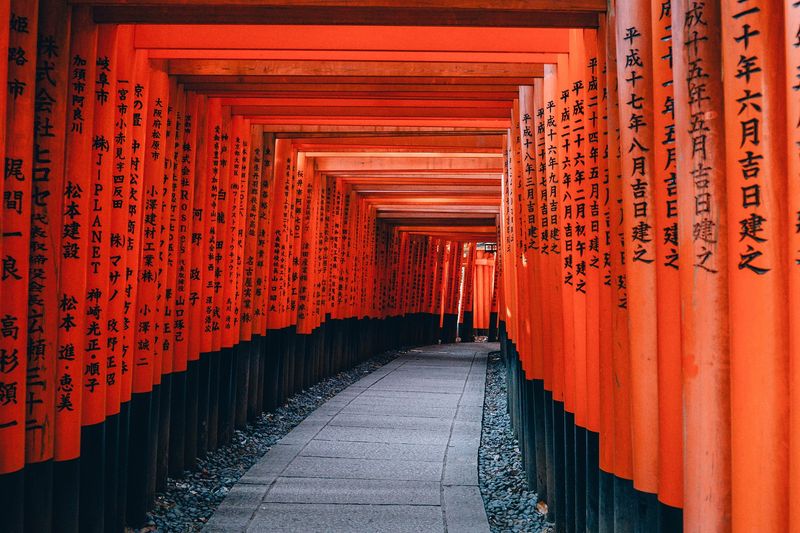
Fushimi Inari-taisha, in Kyoto, Japan, captivates with its iconic red torii gates that lead through serene forest trails. Dedicated to Inari, the Shinto god of rice, this shrine is a symbol of prosperity and good fortune.
The thousands of torii gates create a mesmerizing path up the sacred Mount Inari, inviting reflection and exploration. Visitors often leave fox statues, representing Inari’s messengers, as offerings. Fushimi Inari-taisha’s unique beauty and spiritual energy offer a meditative escape from the everyday hustle and bustle.
18. Temple of Heaven

The Temple of Heaven in Beijing, China, is a masterpiece of Ming dynasty architecture, where emperors once prayed for good harvests. Its design symbolizes the harmony between heaven and earth, with the circular Hall of Prayer standing at its center.
Surrounded by vast gardens, the temple is a popular spot for locals practicing tai chi or playing traditional instruments. Visitors can explore the temple’s historical artifacts and enjoy the peaceful ambiance. The Temple of Heaven’s grandeur and cultural significance make it a must-visit for those interested in Chinese heritage.
19. Meenakshi Temple
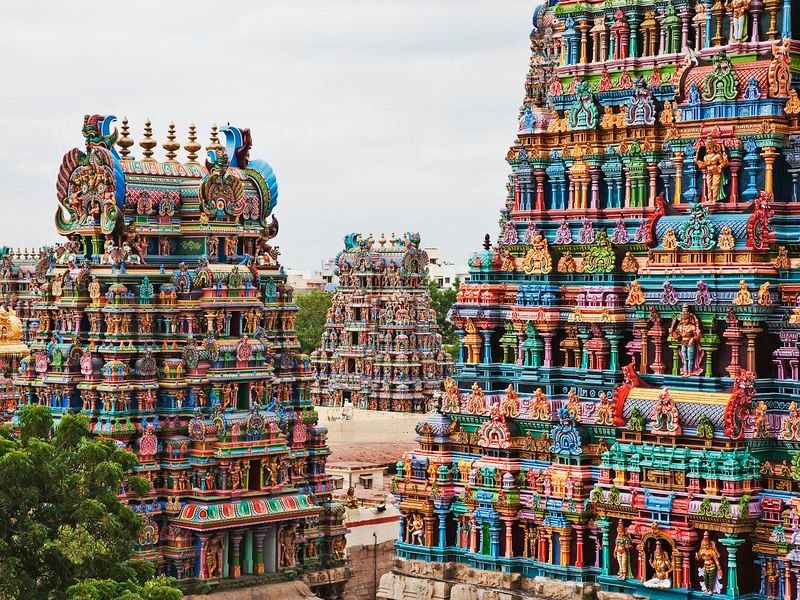
Meenakshi Temple, located in Madurai, India, is a vibrant celebration of Dravidian architecture and Hindu devotion. Dedicated to Goddess Meenakshi and Lord Shiva, it features 14 towering gopurams adorned with colorful statues depicting mythological figures.
The temple’s bustling courtyards and intricately carved pillars invite exploration and reverence. Visitors can partake in daily rituals or witness the grand Tirukalyanam festival, celebrating the divine marriage of Meenakshi and Shiva. Meenakshi Temple’s lively atmosphere and spiritual richness make it a cornerstone of South Indian religious life.
20. St. Basil’s Cathedral
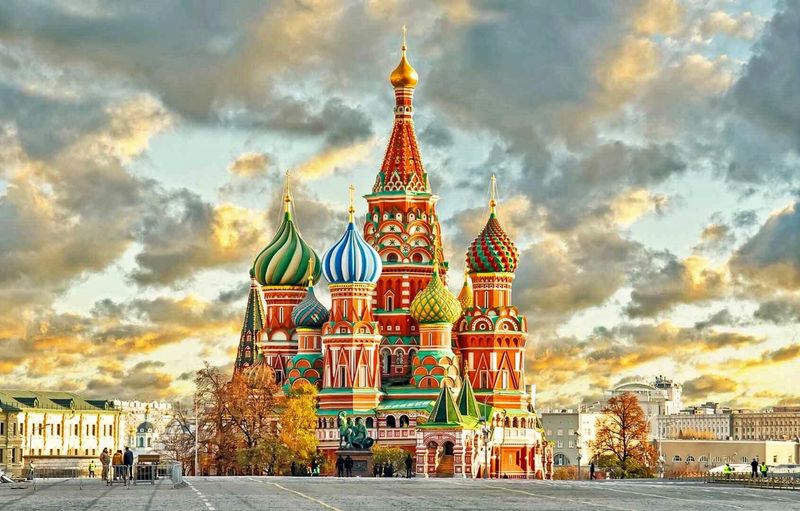
St. Basil’s Cathedral, with its iconic onion-shaped domes, is a symbol of Moscow and Russian history. Constructed in the 16th century by Tsar Ivan the Terrible, it commemorates the capture of Kazan and Astrakhan.
The cathedral’s vibrant colors and unique architecture attract visitors from around the world. Inside, a labyrinth of chapels showcases intricate frescoes and religious artifacts. St. Basil’s vibrant appearance and historical significance make it a cultural and architectural marvel, offering insight into Russia’s rich heritage and artistic legacy.

